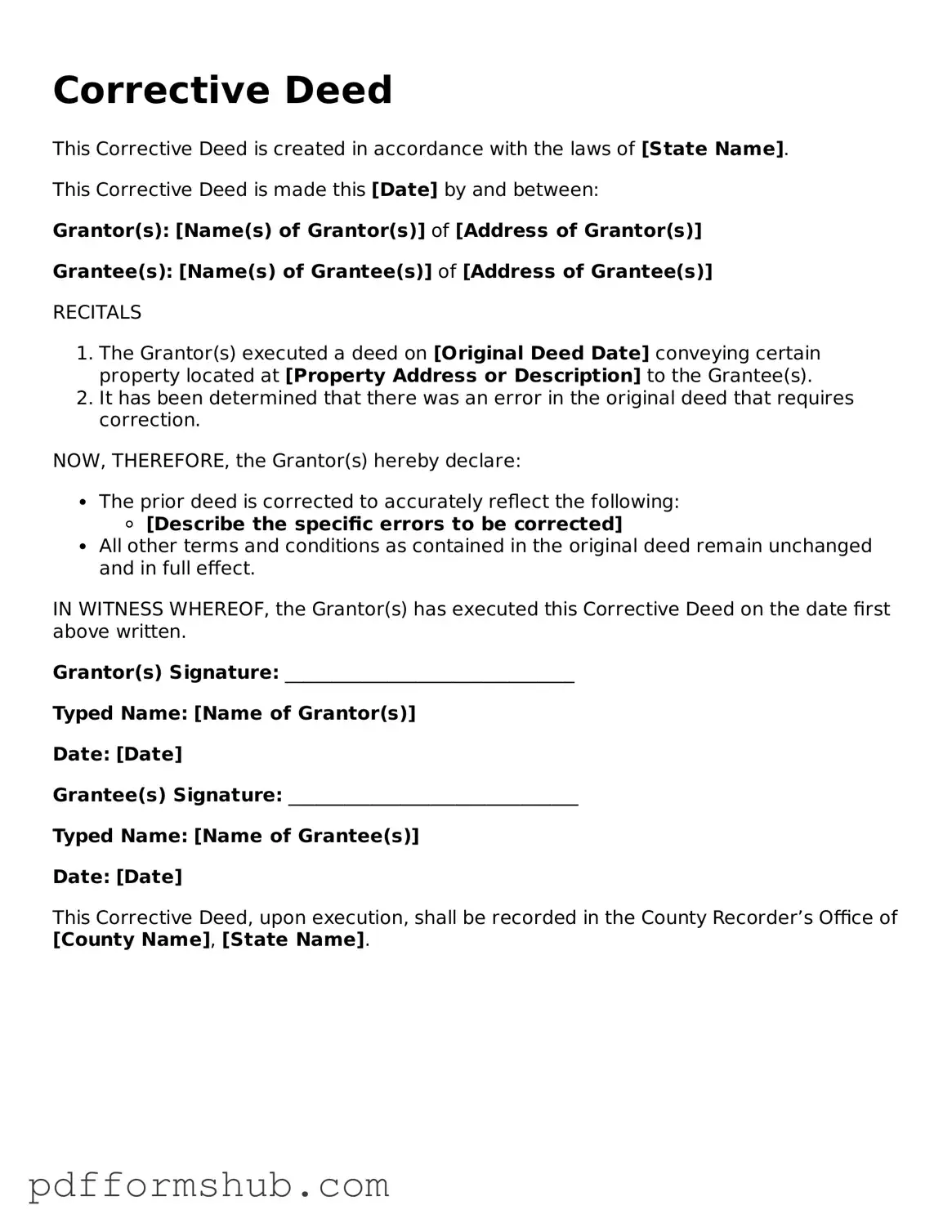Valid Corrective Deed Form
A Corrective Deed is a legal document used to amend or clarify an existing deed, ensuring that the intent of the original parties is accurately reflected. This form is essential for correcting errors or omissions that may have occurred during the property transfer process. To address any discrepancies effectively, consider filling out the Corrective Deed form by clicking the button below.
Customize Form
